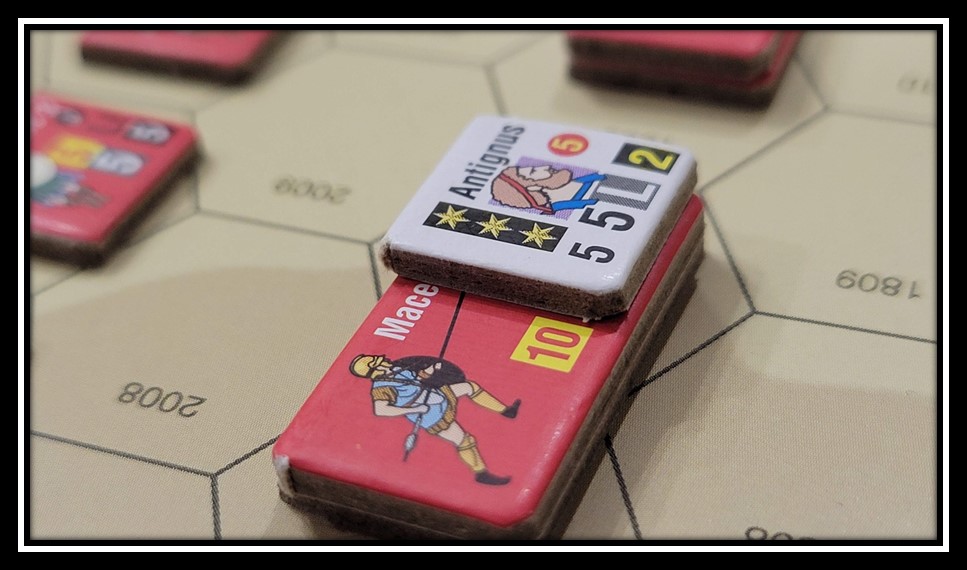The War and Campaign

Cleomenes subdued most of the Peloponnese and besieged Corinth, after learning of the Achaean- Macedonian alliance. Argos rose in revolt in Cleomenes rear, aided by Achaean troops (225 BC). Cleomenes abandoned his siege and assaulted Argos but failed to take it and was forced to withdraw to Laconia.
Meanwhile the Macedonians marched south unopposed, took possession of Corinth as their base, and moved straight on to Argos (224 BC). Cleomenes
would have received a nasty shock to learn that Antigonus had brought the entire Macedonian army with him, and the Allies now substantially outnumbered
him.
After wintering near Corinth, the Allies resumed the offensive in the spring of 223 BC. Tegea was besieged and captured, then Orchomenus and Mantinea. Forced back into Laconia, Cleomenes, short of both troops and treasure, allowed those helots (serfs) who could pay five attic mina, to buy their freedom and serve in the army. Some 2,000 took up this offer, and were promptly enrolled to reinforce the 4,000 Spartans in Cleomenes new Macedonian–style pike phalanx,and drilled over winter. Antigonus sent his Macedonians home for some well-earned ‘R-and-R’, but kept his mercenaries under arms wintering
in the Peloponnese. Cleomenes took advantage of their absence to capture the sprawling city of Megalopolis by stealth, expelled the inhabitants, and
destroyed the much hated city. That Spring Cleomenes began the campaign early by ravaging Argive territory. By early summer the Macedonian
army had returned. The allied army that invaded Laconia under Antigonus was as follows:
Peltasts, guard infantry with pelte and
sarissa: 3,000 (formerly Hypaspists)
Guard cavalry: 300
Macedonian phalanx: 10,000 ‘Bronze shields’ and ‘White shields’
Agriainian light infantry and slingers: 1,000
Celtic mercenaries: 1,000
Assorted mercenaries: 3,000
thureophoroi infantry and 300 cavalry
Achaean contingent: a picked force of 3,000 thureophoroi and 300 cavalry Megalopolitan exiles, armed in the Macedonian style: 1,000
Boeotians: 2,000 infantry armed in the Macedonian style and 200 cavalry
Epirots: 1,000 thureophoroi and 50 cavalry
Acarnanians: 1,000 thureophoroi and 50 cavalry
Illyrian tribesmen: 1,600 thureophoroi.
They could all fight in open or close order, like the old peltasts whose function they carried out.

Antigonus thus deployed a Phalanx of 16,000 plus 12,000 lighter troops (total 28,000 infantry) and 1,200 cavalry – note the high number of lighter
troops for a campaign in mountainous Laconia.

To oppose the expected invasion, Cleomenes could field a maximum of 20,000 troops, including his Spartan phalanx of 6,000 armed in the
Macedonian fashion, as well as 6-7000 Perioikoi and Peloponnesian Allies, probably armed as thureophoroi (but perhaps as hoplites.)
This force was augmented by about 7-8,000 mercenaries (mistophoroi), largely paid for by Ptolemy’s subsidies, and included Tarentine cavalry and Cretan archers.

The cavalry as a whole, Spartan and mercenary, probably numbered less than 1,000. This army he took to Sellasia on the main road south to Sparta, while he sent detachments of his army to block and fortify the smaller passes over the mountains.
He chose his tactical position with care, choosing a part of the River Oinous valley where it was relatively narrow and dominated by two large hills either side called Evas on the West and Olympus on the East; corking the ‘bottleneck’ into Laconia. He posted his brother and co-king Eucleides on Mt Evas with the Perioikoi and Allies, whilst he himself held a spur of Mt Olympus with the Spartan Phalanx and most of the mercenaries. He hastily fortified the two hilltop camps with ditch and palisade.
On the level ground by the river, either side of the road, he posted his cavalry an mercenary skirmishers, to delay any advance down the valley. This was a large trap. As can be seen from the map, there were relatively smooth fan-shaped slopes running down to the valley floor on either side, allowing downhill charges into any foe marching down the valley – the classic ‘pincer’ move against an enemy unable to fully deploy in the narrow valley.

In this excellent defensive position, almost impregnable thanks to the ravines, especially the large one on the Northwest side of Mt Olympus, Cleomenes chose to make his stand, poised for both attack and defence. It was June/July 222 BC.
Antigonus was too wily a bird to put his head in a noose, and also camped on high ground, protected by the small river Gorgylus to his front. For several days the armies reconnoitred, skirmished, manoeuvred and counter-manoeuvred. However Cleomenes was not going to be manoeuvred from his positions and the ‘bottleneck’ into Laconia remained firmly corked. Time was running out for both Antigonus and Cleomenes. Antigonus could not stay long, stuck in one place, the campaigning season rushing on.
Finally, Antigonus Doson lost patience, and, knowing the Allies heavily outnumbered the Lacedaemonians and their allies, he resolved to assault the positions. Cleomenes too was running out of time. Ten days earlier he had learned that Antigonus had pulled off a diplomatic coup, resolving his differences
with Ptolemy, and persuading him to drop the Spartan subsidy.
The Spartan king could no longer afford to pay his mercenaries and he needed to fight before they found this out.